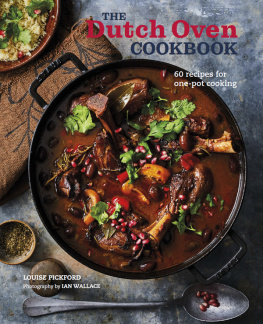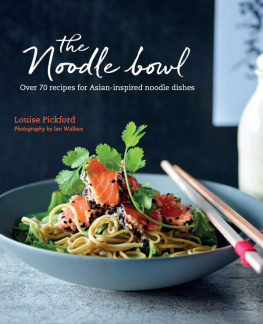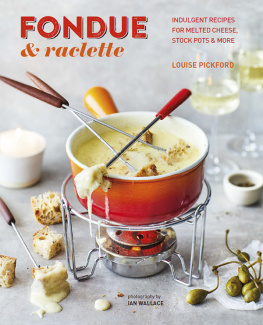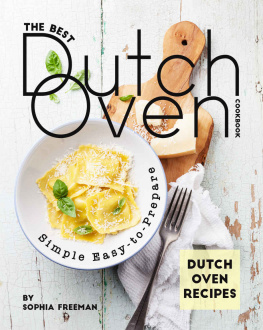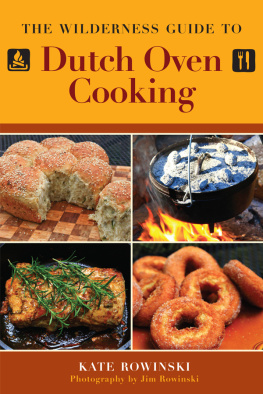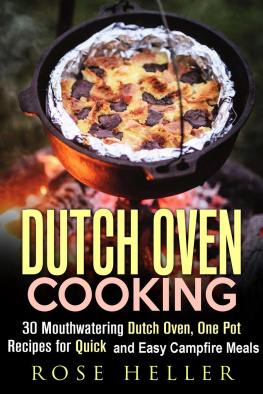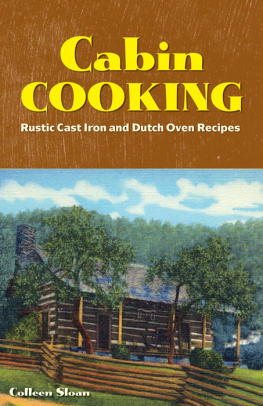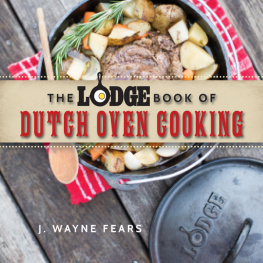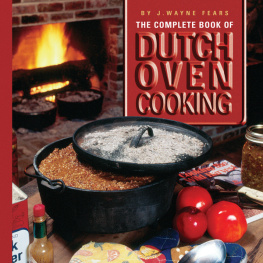
the
Dutch Oven
COOKBOOK

the
Dutch Oven
COOKBOOK
60 recipes for one-pot cooking
LOUISE PICKFORD
Photography by
IAN WALLACE
Senior Designer Toni Kay
Senior Editor Gillian Haslam
Editorial Director Julia Charles
Head of Production Patricia Harrington
Production Manager Gordana Simakovic
Art Director Leslie Harrington
Publisher Cindy Richards
Food and Prop Stylist Louise Pickford
Indexer Hilary Bird
First published in 2021 by
Ryland Peters & Small
2021 Jockeys Fields
London WC1R 4BW
and
341 E 116th St
New York NY 10029
www.rylandpeters.com
10 9 8 7 6 5 4 3 2 1
Text copyright Louise Pickford 2021
Design and photographs copyright Ryland Peters & Small 2021
ISBN: 978-1-78879-389-6
E-ISBN: 978-1-78879-413-8
The authors moral rights have been asserted. All rights reserved. No part of this publication may be reproduced, stored in a retrieval system, or transmitted in any form or by any means, electronic, mechanical, photocopying, or otherwise, without the prior permission of the publisher.
A CIP record for this book is available from the British Library.
US Library of Congress cataloging-in-publication data has been applied for.
Printed and bound in China
NOTES
Both American (Imperial plus US cups) and British (Metric) measurements and ingredients are included in these recipes for your convenience, however it is important to work with one set of measurements and not alternate between the two within a recipe.
All spoon measurements are level unless otherwise specified.
All eggs are large (US) or medium (UK), unless specified as large, in which case US extra-large should be used. Uncooked or partially cooked eggs should not be served to the very old, frail, young children, pregnant women or those with compromised immune systems.
When a recipe calls for the zest of citrus fruit, buy unwaxed fruit and wash well before using. If you can only find treated fruit, scrub well in warm soapy water before using.
Ovens should be preheated to the specified temperatures. We recommend using an oven thermometer. If using a fan-assisted oven, adjust temperatures according to the manufacturers instructions.


Contents

Introduction
I grew up watching my mother cook amazing stews and pot roasts in a cast-iron Dutch oven, or a casserole dish as we called it in the UK. It was so heavy that as a kid I couldnt pick it up empty, let alone when full of deliciousness!
In todays high-convenience, hi-tech world where we demand our designer items perform a dozen different tasks at once, Ill take my 35-year-old hand-me-down Dutch oven over pretty much anything new and sleek. So, what is it about this centuries-old, classic, simple yet beautifully elegant cast-iron pot that makes it many cooks essential piece of kitchen equipment? It is, of course, its versatility and durability.
The shape of the pot and its weight make it ideal for searing meat over a high heat and then lowering the heat to maintain an evenly distributed, lower temperature, for longer. But this is just the tip of the iceberg. A Dutch oven should not be reserved simply for weekend slow cooking, it can and should be used regularly for every type of cooking, from those stews and pot roasts to bakes, cakes, stir-fries, deep-fried dishes, stovetop braises, and even delicious pies. It is a truly versatile cooking pot and in this book I will share with you 60 of my favorite Dutch oven dishes. I have experimented with different cooking methods and developed recipes from around the world, as far and wide as Asia, Europe, South America, and the US. Its range is broad.
HISTORY
It is perhaps in the US that the Dutch oven has found its place in the hearts and homes of most cooks. Tracing its history is fascinating and in the same way that produce was traded and recipes shared around the world, so were cooking pots.
As its name suggests, it was first made by the Dutch in the 17th century (where it is called a braadpan), yet the early ovens were made of copper and brass rather than iron. It was an English craftsman who took the design back to Britain and began using cast iron to produce a cheaper and more dynamic pot. Early Dutch and British settlers and explorers brought their pots with them to America, arriving on the east coast and gradually traveling west across the vastness of the continent.
With its wide rim and straight sides, often gently sloping at the base, the shape has barely changed over the years (although oval and shallower versions have been added). In the early years, because it was used to cook over an open fire rather than on a stovetop or in an oven, three legs were added, allowing it to sit over rather than on the fire, and we find slightly different versions of this worldwide, including the US, South Africa, Australia, the Far East, and even Russia, where early settlers and nomads prized their cast-iron pans for their durability and versatility. The three-legged versions are still popular today with campers the world over.
Dutch ovens became so prized in the US that their value increased and many would be passed down through families as heirlooms (including Mary Ball Washington, mother of US president George Washington). In old TV westerns you often see a cast-iron pot hanging from cowboy wagons. These campfire pans soon evolved to include a slightly inverted, domed lid so that hot charcoal could be shoveled on top, giving it a more uniform internal heat and a functional oven. This is likely when cooks first started to bake bread in their Dutch ovens.
It wasnt until the early 20th century that the French company Le Creuset developed an enamel coating for their cocotte (the French name) to prevent the cast iron from rusting. New shapes, as well as different colors, began to emerge, with variations in individual sizes plus oval and shallow round pots ideal for sauting.
It is a testament to the utility of this internationally loved cooking pot that it remains as treasured, well used, and highly valued today as it was centuries ago, when it would often have been the only cooking vessel available in which to cook your every meal.


USES
As well as stews and long, slow roasting, your Dutch oven is ideal for steaming, whether you use a second dish inside the oven or place food directly on a rack above water or a broth. The heavy lid is perfect for keeping the steam inside the pan.

